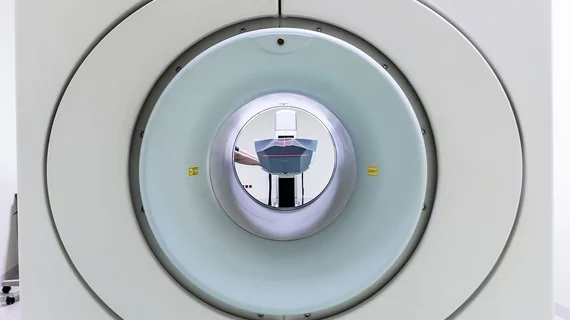Deep learning reconstruction levels playing field between 1.5T and 3T MRI exams
Denoising using deep learning techniques can boost the performance of 1.5T MR brain imaging, resulting in quality comparable or superior to 3T imaging.
While MRI at 3T produces images superior to 1.5T due to its increased field strength and higher-signal-to-noise (SNR) ratio, the exam is less accessible because the equipment itself, along with its operating costs, are pricey. In contrast, MRI at 1.5T is less expensive to operate, but results in images with lower SNR, which can reduce the diagnostic quality of an exam.
To address this, experts recently tested a denoising technique that involves applying a deep learning-based (dDLR) method to MRI data to see if it would improve image quality in 1.5T exams. Their analysis revealed that not only can the technique produce images in line with those produced at 3T, in some cases, their quality can exceed them.
They shared their findings recently in Clinical Radiology [1].
Their analysis compared the image quality of exams completed at both 1.5T and 3T on 11 volunteers. The 3T exams were handled routinely, while a commercially available dDLR method was applied to the 1.5T data. Images were then qualitatively and quantitatively assessed based on a number of metrics.
Experts found that the dDLR-1.5T images had significantly higher signal-to-noise ratios and contrast-to-noise ratios when compared to standard 1.5T images for all sequences. What’s more, for diffusion weighted imaging sequences the SNRs and CNRst-wm were also superior for the dDLR-1.5T images in comparison to 3T.
Adding to the study’s positive findings, corresponding author of the paper S. Kiryu, of the Department of Radiology at the International University of Health and Welfare Narita Hospital in Japan, and co-authors suggested that the capabilities of deep learning techniques could have a starring role in image reconstruction in the future.
“Image reconstruction using deep learning is not limited to noise reduction in MRI images. Accumulating reports continue to show that deep learning techniques can reduce imaging time and provide super-resolution images of various regions, including liver and prostate,” the authors wrote. “These techniques will continue to have an impact on diagnostic imaging of all organs.”
The study abstract can be viewed here.

